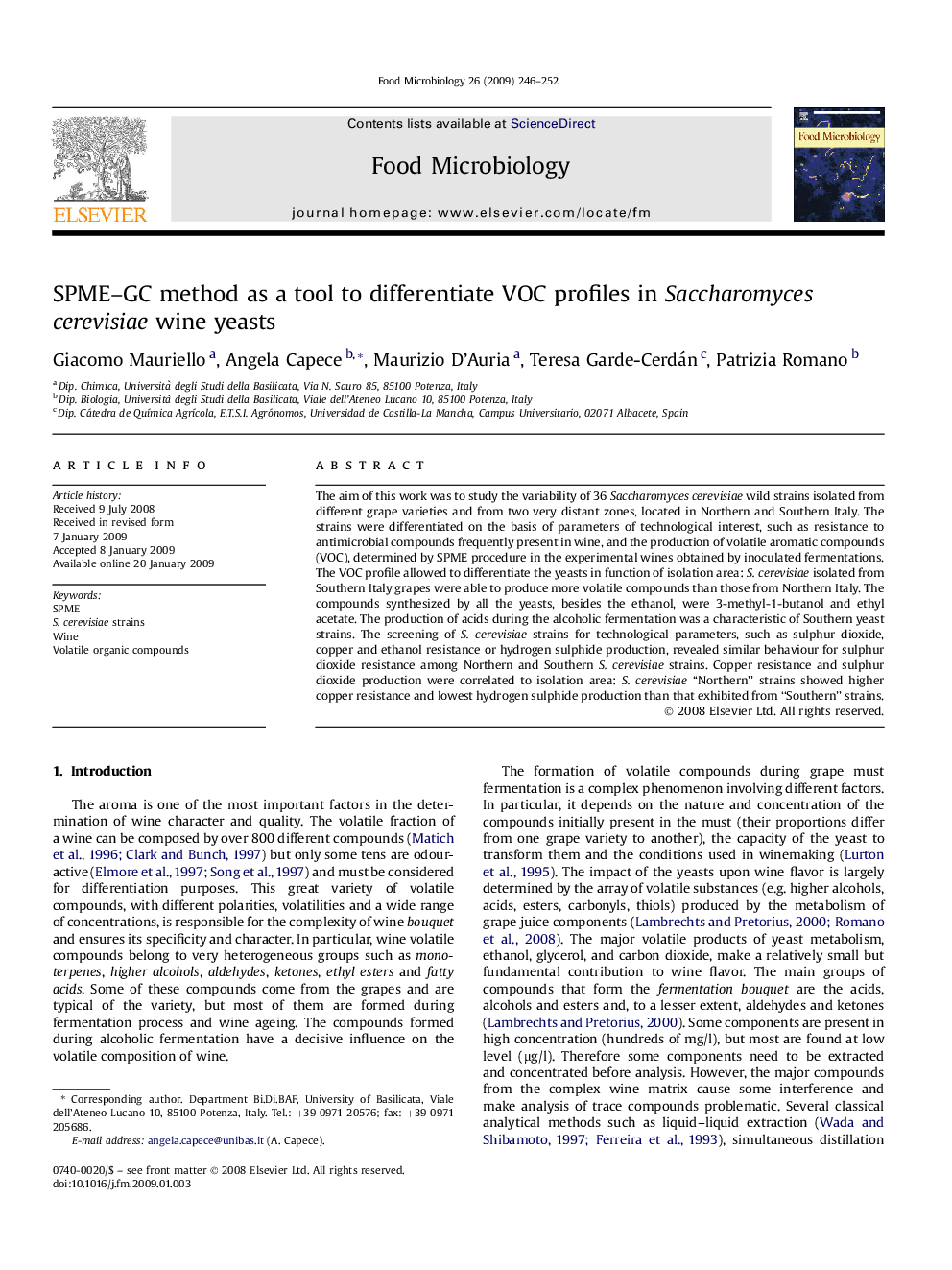| Article ID | Journal | Published Year | Pages | File Type |
|---|---|---|---|---|
| 4363516 | Food Microbiology | 2009 | 7 Pages |
The aim of this work was to study the variability of 36 Saccharomyces cerevisiae wild strains isolated from different grape varieties and from two very distant zones, located in Northern and Southern Italy. The strains were differentiated on the basis of parameters of technological interest, such as resistance to antimicrobial compounds frequently present in wine, and the production of volatile aromatic compounds (VOC), determined by SPME procedure in the experimental wines obtained by inoculated fermentations. The VOC profile allowed to differentiate the yeasts in function of isolation area: S. cerevisiae isolated from Southern Italy grapes were able to produce more volatile compounds than those from Northern Italy. The compounds synthesized by all the yeasts, besides the ethanol, were 3-methyl-1-butanol and ethyl acetate. The production of acids during the alcoholic fermentation was a characteristic of Southern yeast strains. The screening of S. cerevisiae strains for technological parameters, such as sulphur dioxide, copper and ethanol resistance or hydrogen sulphide production, revealed similar behaviour for sulphur dioxide resistance among Northern and Southern S. cerevisiae strains. Copper resistance and sulphur dioxide production were correlated to isolation area: S. cerevisiae “Northern” strains showed higher copper resistance and lowest hydrogen sulphide production than that exhibited from “Southern” strains.
